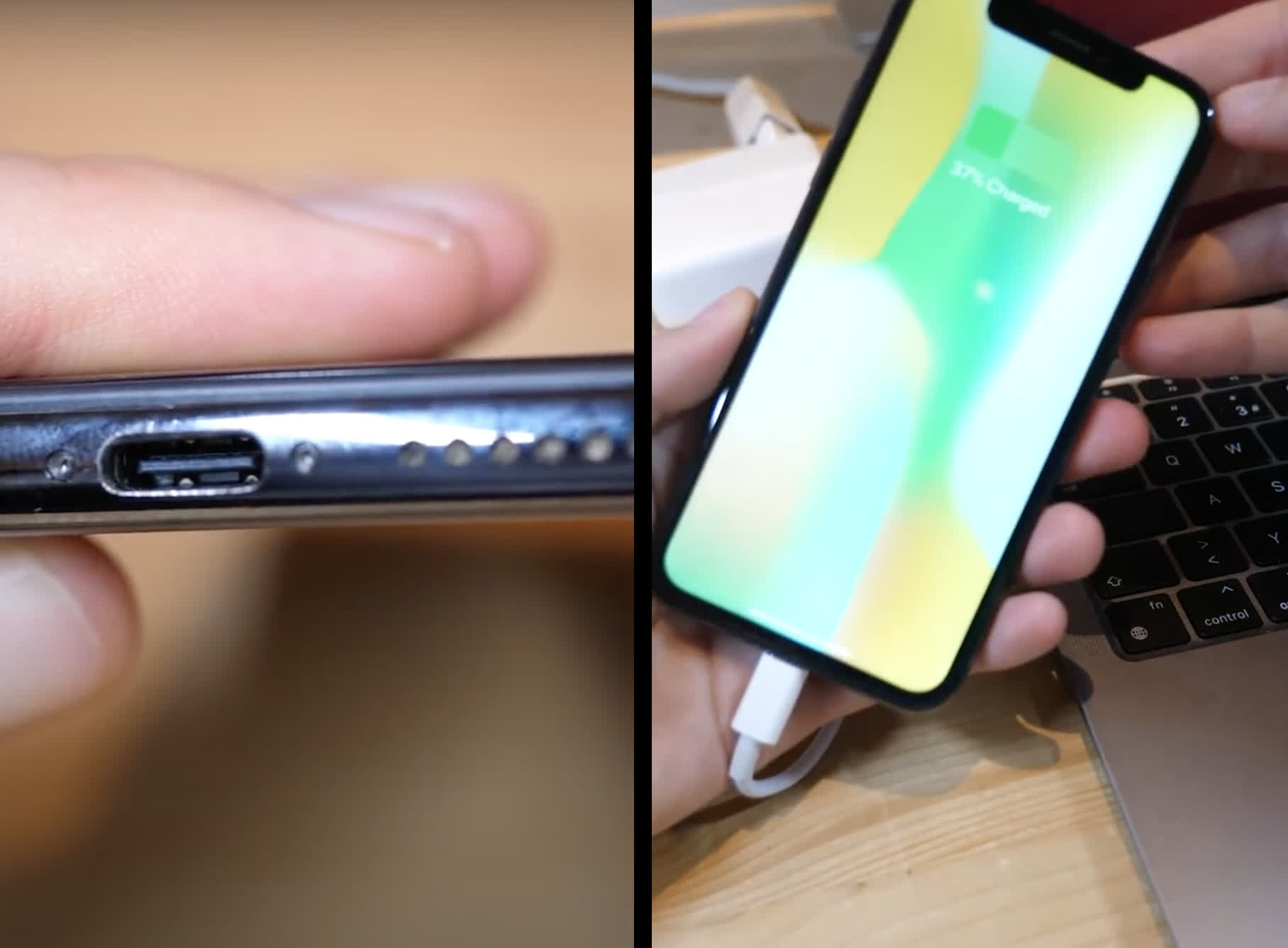Forward-looking: It doesn't look like Apple will switch the Lightning port on the iPhone to USB-C on its own accord. However, that doesn't mean it can stop passionate individuals from doing so. A Swiss student was able to modify his iPhone X to the point where it has a fully working USB-C port.
While most phonemakers today equip their devices with a USB-C port, Apple is still reluctant to switch from its proprietary Lightning solution to the widely used connector. There are many potential reasons for this, including the never-ending confusion around USB-C cables and their exact capabilities, as well as the vast ecosystem of accessories that still use Lightning and bring Apple a steady stream of revenue from licensing fees.
Since the Cupertino giant doesn't seem to be in a hurry to adopt USB-C on its best-selling device, hardware enthusiasts have taken to modding to make it happen. Such is the case of robotics engineering student Ken Pillonel, who was able to successfully replace the Lightning connector on an iPhone X with a fully working USB-C port.

Pillonel, who holds a master's degree from the Swiss Federal Institute of Technology, EPFL, revealed the feat in a short YouTube video titled "World's First USB-C iPhone X," where he quickly demonstrates the new connector can be used for both charging and data transfers. To achieve this, Pillonel had to spend several months to completely reverse-engineer Apple's C94 connector, as well as figure out how to miniaturize the flex daughterboard that bridges the power and data lines to the female USB-C connector.
In a previous update posted in May, Pillonel showcased a prototype of the daughterboard that was simply too large to fit inside the iPhone X, even though it was already capable of charging at that point. Pillonel is currently working on a more detailed video explanation on how this was achieved, but it's not yet clear when it will be uploaded.
It goes without saying this mod isn't a project that most people could tackle on their own. Still, the results come just as the European Commission is working to revise legislation and mandate the use of USB-C on almost all mobile devices, with the exception of wearables and other devices where wireless charging is more practical. Once that is in effect, Apple will have two years to comply.